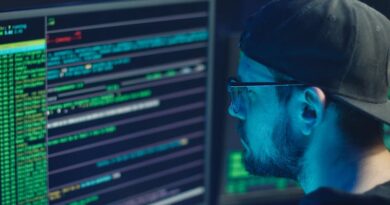Understanding Different Operating Systems
When you turn on your computer, smartphone, or tablet, the first thing you interact with is the operating system. It is the software that manages your device’s hardware and allows you to run applications, access the internet, and perform various tasks. But have you ever stopped to think about the different types of operating systems that exist and how they influence your digital experience? In this comprehensive guide, we will delve into the world of operating systems, exploring their history, functions, and significance in today’s technology-driven world.
The Evolution of Operating Systems

The concept of operating systems dates back to the 1950s when computers were massive machines that required specialized knowledge to operate. Early operating systems were basic and mainly focused on managing the hardware resources of the computer. As technology advanced, operating systems became more sophisticated, incorporating features like multitasking, file management, and graphical user interfaces.
One of the most significant milestones in the history of operating systems was the development of Unix in the late 1960s. Unix introduced the concept of a hierarchical file system, which is still used in modern operating systems. It also popularized the idea of modular design, allowing users to customize their systems by adding or removing components.
In the 1980s, Microsoft revolutionized the world of personal computing with the release of MS-DOS (Microsoft Disk Operating System) and later Windows. Windows introduced a user-friendly interface that made computers more accessible to the general public. Meanwhile, Apple’s Macintosh operating system showcased the power of graphical user interfaces and paved the way for modern operating systems like macOS.
Today, we have a wide range of operating systems catering to different devices and user preferences. From the ubiquitous Windows and macOS to mobile operating systems like Android and iOS, each operating system has its unique features and capabilities.
Types of Operating Systems

Operating systems can be broadly classified into several categories based on their use cases and architecture. Let’s explore some of the most common types of operating systems:
1. Real-Time Operating Systems (RTOS)
RTOS is designed to handle real-time applications that require precise timing and fast response times. These operating systems are used in critical systems like aircraft navigation, medical devices, and industrial automation. Examples of RTOS include VxWorks, QNX, and FreeRTOS.
2. Single-User, Single-Tasking Operating Systems
These operating systems can only run one application at a time and are primarily used in embedded systems and appliances. An example of a single-user, single-tasking operating system is Palm OS, which was used in early personal digital assistants (PDAs).
3. Single-User, Multi-Tasking Operating Systems
These operating systems can run multiple applications simultaneously, allowing users to switch between tasks seamlessly. Windows, macOS, and Linux are examples of single-user, multi-tasking operating systems commonly used in personal computers.
4. Multi-User Operating Systems
Multi-user operating systems allow multiple users to access the same computer simultaneously. These systems are commonly used in server environments where multiple users need to share resources. Examples of multi-user operating systems include Unix, Linux, and Windows Server.
5. Distributed Operating Systems
Distributed operating systems manage a group of independent computers connected by a network. These systems enable users to access resources distributed across multiple machines. Examples of distributed operating systems include Google’s Android and Apple’s iOS.
Key Features of Operating Systems
Regardless of the type of operating system, they share common features that are essential for managing hardware resources and providing a user-friendly interface. Some of the key features of operating systems include:
1. Process Management
Operating systems manage processes, which are instances of running programs. They allocate system resources to processes, schedule their execution, and provide mechanisms for inter-process communication. Process management is crucial for ensuring efficient utilization of the system’s CPU and memory.
2. Memory Management
Memory management involves allocating and deallocating memory to processes, ensuring that each process has enough memory to run. Operating systems use techniques like virtual memory to manage memory efficiently and prevent processes from interfering with each other.
3. File System Management
File system management involves organizing and storing files on storage devices like hard drives and SSDs. Operating systems provide a file system that allows users to create, delete, and modify files, as well as organize them into directories for easy access.
4. Device Management
Device management involves controlling and communicating with hardware devices like printers, network cards, and USB drives. Operating systems provide device drivers that enable applications to interact with hardware devices without needing to understand their low-level details.
5. User Interface
The user interface is the graphical or command-line interface that allows users to interact with the operating system. It includes elements like windows, icons, menus, and buttons that make it easy for users to navigate the system and run applications.
The Role of Operating Systems in Modern Technology
Operating systems play a crucial role in modern technology by providing a platform for running applications and managing hardware resources. They act as an intermediary between users and the computer hardware, abstracting complex hardware operations into simple commands that users can understand.
One of the key advantages of operating systems is their ability to provide a consistent user experience across different devices. For example, the Windows operating system offers a familiar interface that makes it easy for users to switch between desktops, laptops, and tablets without having to relearn how to use the system.
Operating systems also enable developers to create applications that can run on multiple devices by providing a common set of APIs (Application Programming Interfaces). This allows developers to write software once and deploy it on different platforms, saving time and effort in the development process.
Moreover, operating systems are constantly evolving to meet the changing needs of users and technology. New features like virtual assistants, biometric authentication, and augmented reality are being integrated into operating systems to enhance user experience and improve security.
Challenges and Controversies in Operating Systems
While operating systems have revolutionized the way we interact with technology, they also pose challenges and controversies that need to be addressed. One of the biggest challenges facing operating systems is security. As more devices become interconnected through the internet of things (IoT), the risk of cyber attacks and data breaches has increased.
Another controversial issue in operating systems is the balance between user privacy and data collection. Operating systems like Windows and macOS collect user data to improve their services and personalize user experiences. However, this practice has raised concerns about user privacy and data protection.
Additionally, the dominance of certain operating systems like Windows and Android has raised questions about competition and market dominance. Some critics argue that the monopoly of these operating systems stifles innovation and limits consumer choice.
Expert Opinions
According to tech experts, operating systems will continue to evolve to meet the growing demands of users and technology. With the rise of artificial intelligence, the Internet of Things, and edge computing, operating systems will need to adapt to new use cases and devices.
Experts also emphasize the importance of security in operating systems, highlighting the need for robust encryption, authentication, and access control mechanisms to protect user data and prevent cyber attacks.
Conclusion
To wrap things up, operating systems are the backbone of modern technology, providing a platform for running applications and managing hardware resources. Understanding the different types of operating systems, their key features, and their role in modern technology is essential for navigating the digital world.
As technology continues to advance, operating systems will play an increasingly important role in shaping our digital experiences. By staying informed about the latest developments in operating systems and addressing the challenges and controversies they face, we can ensure a secure and seamless computing environment for all users.




